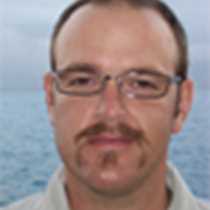Santiago
After navigating the entire night we arrive to our next destination at Espumilla beach on Santiago Island. An early pre-breakfast hike gives us a treat as we encounter a Pacific green sea turtle on the high dunes making a nest and laying eggs. Galápagos holds one of the last protected nesting areas for this species on Earth and we are pleased to see the results of this protection. A young Galápagos hawk is perched close by, curious and hungry with a desire to learn how to obtain its own nourishment. As we head inland we pass through a stand of old growth black mangroves that hold this coastline together in its mass of biodiversity. Arriving to an overlooking ridge, large Palo Santo incense trees ooze a strong fragrance. Small finches, mockingbirds, and Galápagos doves fleet in and out of the vegetation not paying much attention to us as we stop and listen to the surrounding symphony of bird song. After our return and a short navigation we start various water activities at Buccaneers Cove, once a haunt of countless pirates. Snorkeling is a highlight as we encounter a mix of various species from other Pacific destinations coalescing here with a strange mix of temperate and tropical species. A small Galápagos goby stands out as an inch-long brightly colored representative of our diverse oceanic life.
Before arriving to this magnificent island all were well informed of the damage caused by invasive species upon the native and endemic wildlife. Santiago is a prime example of what can happen with conservation biology. Santiago has had all introduced large mammal predators eliminated and the island is on the road to recuperation with the lush native and endemic vegetation returning after an absence of years from various surfaces of the island.
In the afternoon a black beach welcomes us with warm sand and inviting surrounding water. Turtles and sea lions dominate the afternoon snorkel at Puerto Egas, James Bay. A quick change allows us to start our hike along the outer coast. Endemic plants are strewn among the landscape including endemic versions of Croton and Lantana. Upon arrival to the coast we meet Galápagos fur seals lazing in the crystalline waters. Lava tubes that have collapsed allow for a view into the coastal waters. Suspended basalt bridges that we can walk over give us a view of the volcanic past and shore birds including oystercatchers, plovers, whimbrels, and willets are distributed along the coastline. Golden light blankets the coast as we return to our black beach and our eventual return to our home, National Geographic Islander.




